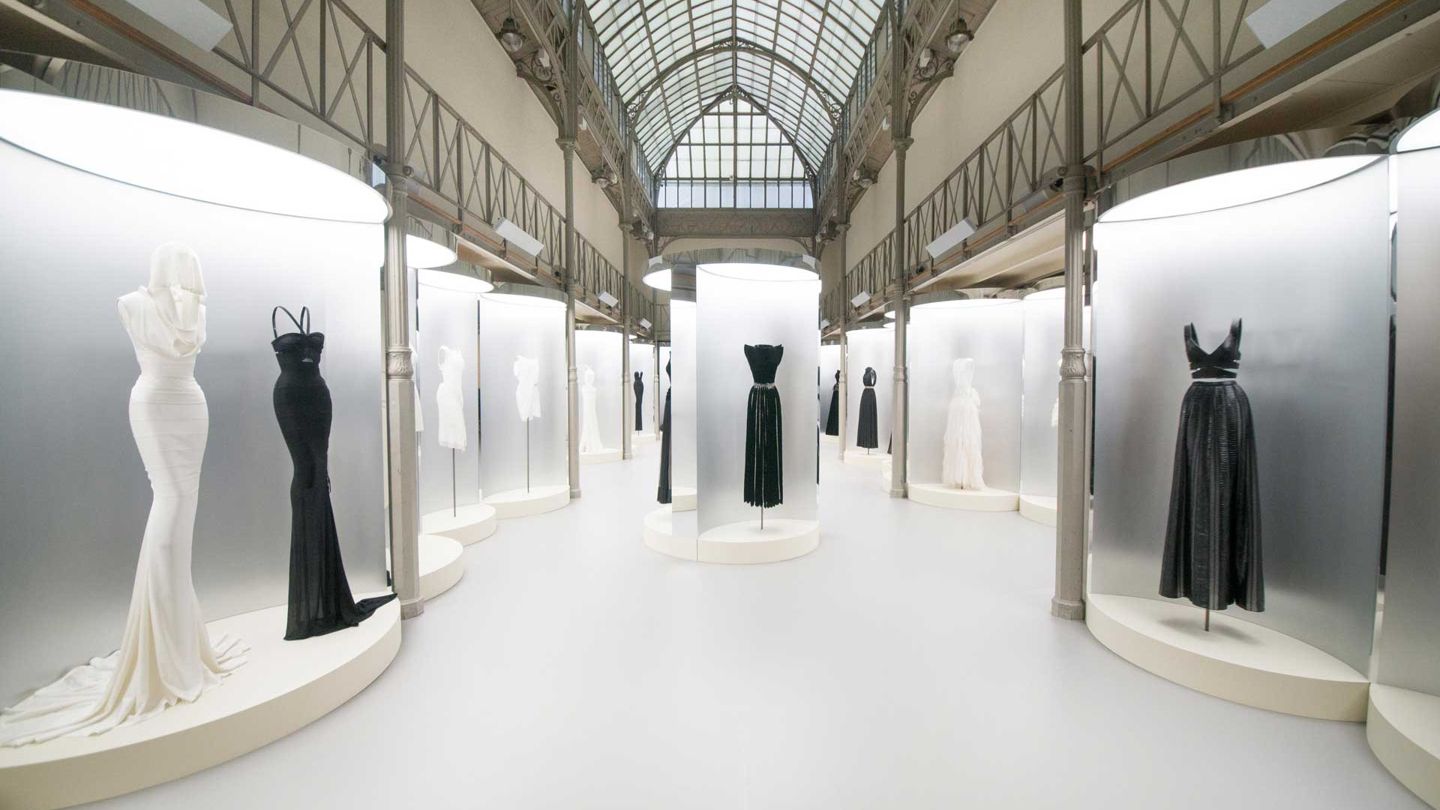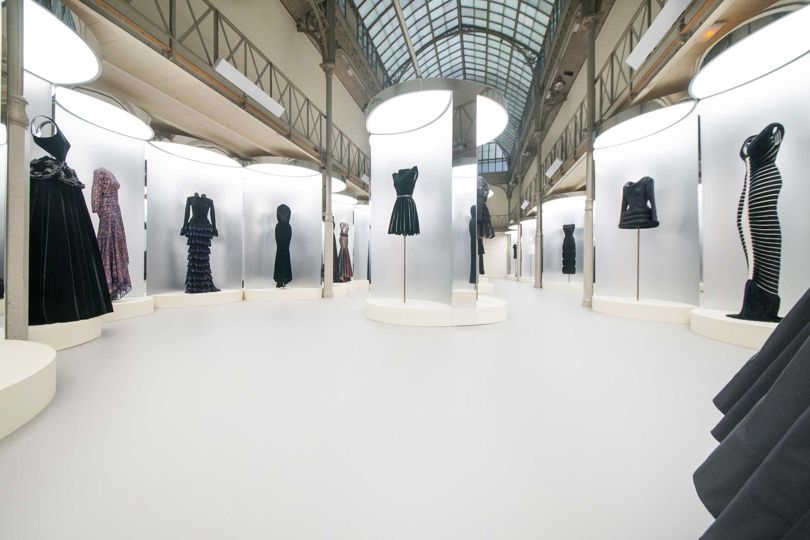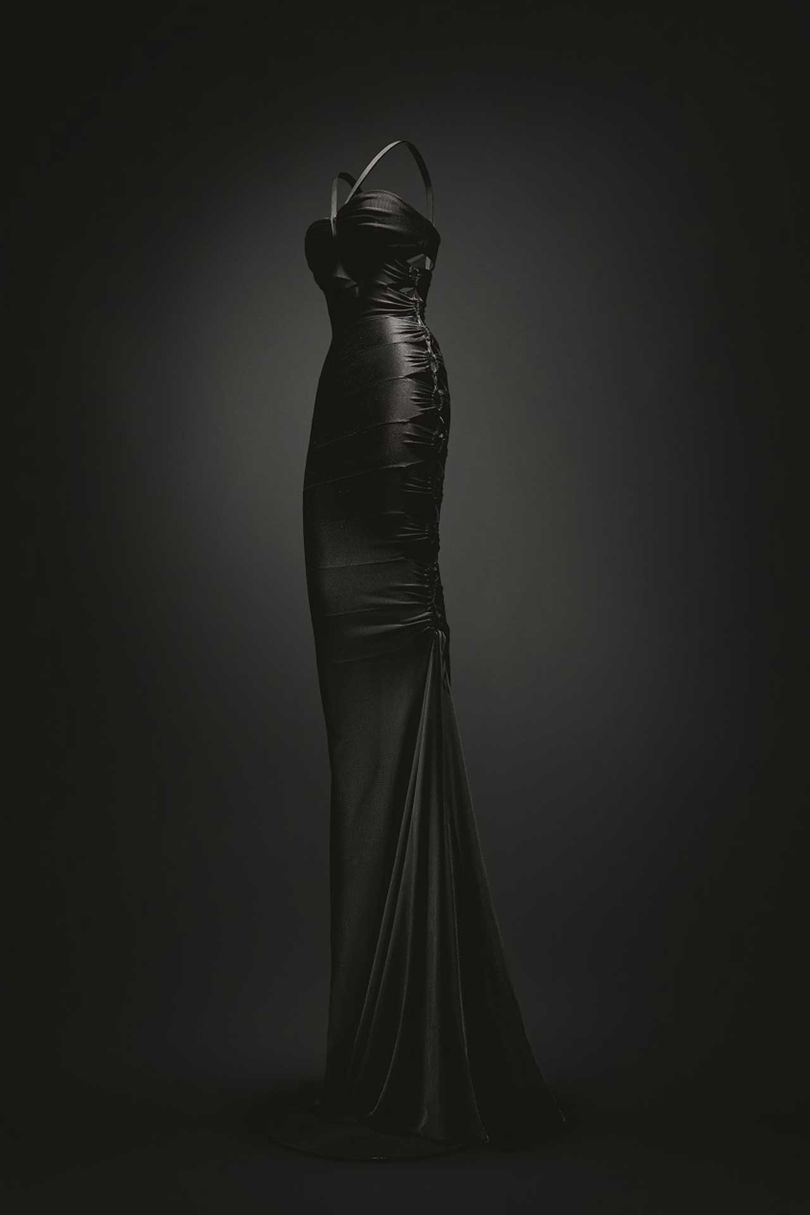|
敬请期待中文版  A new exhibition of Azzedine Alaïa's works, 'Je suis couturier', at the late designer's studio in the Marais in Paris, runs until June Maison Alaïa Even without Naomi Campbell walking, cat-like, down the runway, the dress she wore at Azzedine Alaïa’s final show in 2017 could only have been by the designer. And the same could be said about another snake of a dress, this time in white, seen so famously in 1985 in pink on Grace Jones – her mighty figure towering over the diminutive Alaïa. ‘Azzedine Alaïa: “Je suis couturier”’ (“I am a couturier”) is not just a homage to the designer who died so suddenly in November. There is a power to this exhibition of Alaïa’s work, which spanned nearly four decades, held in Paris’ Marais district in the building that was his studio, his store, his fashion-family kitchen and his home. And at a moment when the fashion world is in a febrile seizure of change, it is important to understand what the Tunisian designer stood for. To me, his legacy is as “the greatest couturier who never was”. Yet, at the same time, he created a serious business and built a studio whose dedicated staff will carry on his work. It is significant that Hedi Slimane, formerly at Dior Homme, was announced on Sunday by LVMH as the new designer at Céline. That statement epitomises the maelstrom of change engulfing the fashion industry. It is the opposite of what the Alaïa exhibition shows: constancy in creation. While two major designers – Alber Elbaz, formerly at Lanvin, and Givenchy’s Riccardo Tisci – are still waiting in the wings, others are on the move: Phoebe Philo outgoing from Céline and menswear designer Kim Jones from Louis Vuitton Homme. Wherever these creative people end up, they will bring with them their personal visions. That is the reason for their appointments. Alaïa’s vision of clothing over the decades was radically different. In his own words: “I like it when they are beautiful and timeless, not cluttered with details, ornaments and colours that prematurely age them. The simplest are the most difficult to create.”  The new Azzedine Alaïa exhibition features 41 pieces in black and white Maison Alaïa Olivier Saillard, the curator who has staged the 41 works, took those words as his starting point. The exhibition is a vision of black and white, with one single splash of blood red. The silhouette Alaïa created, from the start of his Paris career in 1979, was always about tracing the body, although this graceful and tasteful exhibition does not resonate with Alaïa’s label as “the king of cling”. “Pure black is the carving block for this sculptor; black, because it gives shape to an idea without diluting, and chalk and plaster whites that reminded Alaïa of his years at the Beaux Arts school in Tunis,” says Saillard, who, as a historian, puts the late designer into the same category as other great 20th century “fashion architects”, including Cristóbal Balenciaga and Madeleine Vionnet.  From the exhibition "Azzedine Alaïa: 'Je suis couturier'" Maison Alaïa The show, appropriately presented within scallop-shaped, semi-opaque screens, opens with three figure-hugging, short dresses from the early 1980s, but a few steps further on, Saillard presents a very different style from 1981: a draped dress with a Grecian fold, which comes under the category of “couture”, meaning made to order. “They are timeless designs that have stayed forever,” says Carla Sozzani, who worked with Alaïa not only as a friend and colleague, but also as a merchant for her 10 Corso Como concept store in Milan. “Clothes that sell were a big point for Azzedine,” Sozzani says. “He was always saying that women had to feel comfortable, but he was also an architect –- and when women tried on the clothes, all of a sudden they had a waist.” “He really loved to see women look beautiful – for him it was a pleasure,” she remembers. “I saw him putting clothes directly on the woman’s body. He never even did a sketch.”  From the exhibition "Azzedine Alaïa: 'Je suis couturier'" Maison Alaïa What will happen to this Alaïa building – and his heritage – given that parent company Richemont will open a major store on London’s Bond Street this spring? Sozzani expects the loyal team to follow their master’s voice and to continue to create outfits, many of them in the finest wool from Italian mills. The exhibition is a microcosm of a fashion company of today: the mix of made-to-order “couture” outfits and goods designed to sell in stores. But perhaps what singles out Alaïa is not just his command of shapes that caress the body, but his skill with fabric. Two dresses made with wisps of lace have a fairy-like effect, while the designer is equally impressive as a tailor. A shapely winter coat closed the show. This Paris exhibition is more of a tribute than a full exhibition, enabling fashion folk to pay their dues to exceptional talent. Charlotte Rampling, Farida Khelfa, Frédéric Mitterrand, Jean-Paul Goude and photographer Paulo Roversi were among those who attended the opening. Meanwhile, a full-scale exhibition, planned a year ago, will take place at London’s Design Museum in May, curated by Mark Wilson, who has worked on a variety of Alaïa exhibitions and is Chief Curator of the Groninger Museum in the Netherlands. That will bring an opportunity to see a full-scale assessment of Alaïa’s exceptional talents and enduring legacy. ‘Azzedine Alaïa: “Je suis couturier”’ will run from 22nd January to 10th June 2018 at 18 rue de la Verrerie, 75004 Paris, and is open to the public everyday from 11am to 7pm (责任编辑:admin) |
